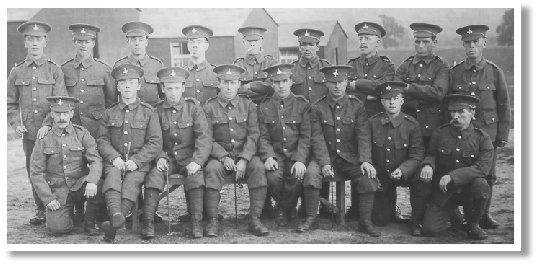Copyright © All rights reserved.



James E. Kitching
James Edward Kitching was the second son of William and Elizabeth (nee Beall) Kitching and older brother of Fred Kitching (above him on the memorial) and was born in the last quarter of 1891 in Old Malton (his birth was registered in the Malton area). William was a Boot and shoe maker and was living at 12 Westgate, Old Malton with his wife and six children at the time of the 1901 Census.
1901 Census – resident at 12 Westgate, Old Malton
KITCHING, William, Head, Married, M, 44, Boot & Shoemaker, Malton Yorkshire,
KITCHING, Elizabeth, Wife, Married, F, 44, , Norton Yorkshire,
KITCHING, Tom, Son, Single, M, 18, Boot & Shoemaker, Malton Yorkshire,
KITCHING, Florence, Daughter, , F, 11, , Malton Yorkshire,
KITCHING, James, Son, , M, 9, , Malton Yorkshire,
KITCHING, John, Son, , M, 7, , Malton Yorkshire,
KITCHING, Fred, Son, , M, 6, , Malton Yorkshire,
KITCHING, Walter, Son, , M, 3, , Malton Yorkshire,
Elizabeth died on 22nd July 1905 and William on 10th September 1906 so the eldest son Tom took over the household, marrying about 1910.
1911 Census – resident at 12 Westgate, Old Malton
KITCHING, Tom William, Head, Married, M, 28, Bootmaker, Yorks Old Malton,
KITCHING, Louisa Alice, Wife, Married 1 years, F, 25, , Yorks Old Malton,
KITCHING, Florence Emma, Sister, Single, F, 21, General Servant Domestic, Yorks Old Malton,
KITCHING, James Edward, Brother, Single, M, 19, Grocer, Yorks Old Malton,
KITCHING, Fred, Brother, Single, M, 16, Joiner, Yorks Old Malton,
KITCHING, Arthur, Brother, , M, 9, , Yorks Old Malton,

Before the war James worked for Mr A. Wood, a grocer in Old Malton and “by his agreeable manner and rare business capacity won the esteem of his employer and all with whom he came in contact.”
James served in the Territorial Force for some time before enlisting with the 13th Battalion of the Yorkshire regiment formed in Richmond in July 1915 as a “Bantam” battalion. They were moved to Aldershot in July 1915 and came under orders of 121st Brigade, 40th Division.
This Division was formed between September and December 1915, composed of some bantam units and others which had a mixture of regulation-
The Division moved to France between 2 and 6 June 1916 and by 9 June had concentrated near Lillers. It then served between June and late October 1916 on the front near Loos, before engaging in the Battle of the Ancre and the taking of Beaumont Hamel. The battle was politically important but ultimately insignificant. When Gough called off the Battle of the Ancre, the Battle of the Somme was almost over for the winter.
James seems to have been among troops sent out to France at this point to replace the heavy casualties of this campaign and had only been in France some three months when he was shot in the kidneys and killed on 6th January 1917. According to a 2nd Lieutenant of his company “He was in the company of the Colonel and Captain of his company, showing the way to some trenches close by when a German sniper fired. Private Kitching was shot and died immediately. He was given a Christian burial. The officers and men join in sympathy with you in the sad loss. I had a good deal to do with him in his training, and I always found him a good soldier, whose place will be very difficult to fill. He was respected by both officers and men. If ever a man went to heaven it will be him.”
James’ grave was identified after the war, (he had been formally buried and a cross placed on the grave) and his remains moved and re-
The cemetery was made after the Armistice when graves were brought in isolated positions chiefly south and east of the village and from the following small burial grounds:-
